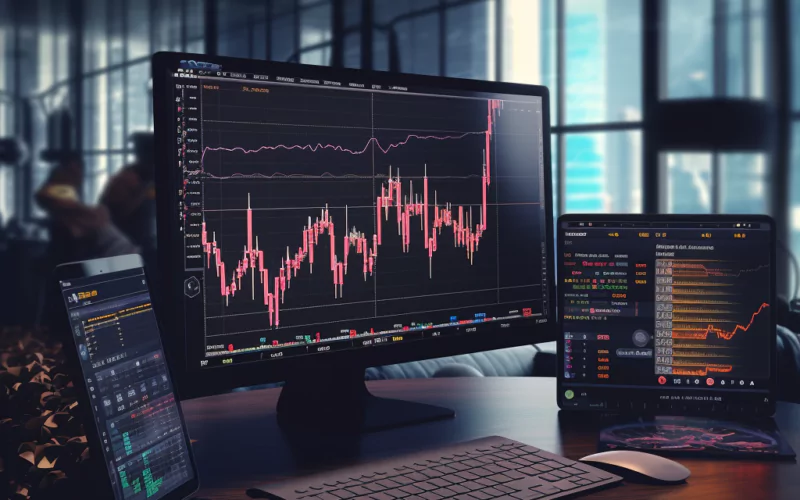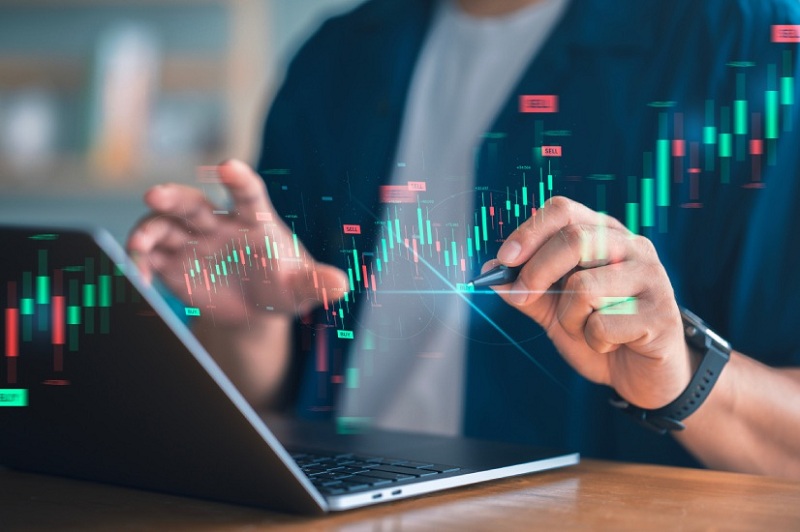Diving into the world of crypto, you’ve likely hit the hard truth that not all exchanges are created equal. Key to your trading success is knowing how to measure crypto exchange liquidity. It’s the lifeblood that will either pump up your trades or leave your assets cold. With a market that never sleeps, you need to spot the sharks from the minnows – it’s all about who’s got the depth. Stay sharp, because this guide will be your eyes in the deep blue, helping you navigate the crucial indicators and mechanics you can’t afford to ignore. Ready to turn liquidity from a murky concept into clear strategy? Let’s unlock the secrets together.
Understanding Liquidity in Cryptocurrency Exchanges
Key Liquidity Indicators for Assessing Market Health
Liquidity is like the blood in the veins of crypto markets. It keeps things moving. But what tells us if a market is healthy? We use special signs that show us how easy it is to buy and sell without big price changes. These are called liquidity indicators.
Let’s dig deeper. Knowing if it’s easy to trade without moving the price is super useful. We look at three big hints. These include how much is traded, the difference in buy and sell prices, and the order book depth. Each one gives us a piece of the puzzle.
The big trade clue is trading volume. If lots of trades happen, the market is usually healthy. Then there’s the gap between what sellers want and what buyers will pay. That’s the bid-ask spread. A tight spread means a healthier market. Lastly, peek at the order books. Lots of orders piled up mean lots of folks want to trade.
Enough trades, small price gaps, big order books? They all point to good health in crypto exchange land.
The Role of Trading Volume in Gauging Market Activity
Now, let’s chat about measuring trading volume in digital currency markets. It’s like watching the heart rate of crypto. High trading volume shows us that lots of people are buying and selling. That’s what we want.
More trading means more chances for you to trade too, without getting stuck with a bad price. This is why volume is a key clue in figuring out if a crypto market is alive and kicking.
But the story does not end here. We need to see who is trading too. Sometimes big players can make volume look high. Here’s a pro tip: Look at who is trading. Is it just a few whales or lots of little fish? A mix of both is best.
In simple terms, if I see a lot of trading, I know there’s a high chance I can jump in or out of a trade. That’s peace of mind for you and me, friend.
Measuring trading volume is like taking the pulse of the crypto world. And we need that steady pulse to keep our trading hearts happy. Happy trading matters because it means you can make moves in the market without shocks and spikes in prices. Plus, your chances to make a profit get better with each trade. Remember, a vibrant market is your best pal.
So, high volume is a sign of a strong market. It also helps to keep prices stable, which is great for both new traders and old pros alike. Always check volume first. That’s your power move in the crypto game.
Now, that was a pretty interesting run down the liquidity lane, wasn’t it? Talking about all these bits and pieces helps us not just trade but trade well. And as they say, the more you know, the better you trade. Keep these tips tucked in your mind and you’re already ahead in the game.

Analyzing Order Books and Bid-Ask Spreads
Order Book Depth: A Proxy for Market Liquidity
When you’re looking at how jam-packed a market is, peek at the order book depth. It shows all the buy and sell offers waiting to match. A thick order book means a market is like a big, bustling city. Lots of people want to trade, and that’s good! It’s a sign of a healthy market because you can buy or sell large amounts without the price changing too much.
Now, if the order book is thin, it’s like a quiet town – not much going on. Fewer people trading can mean your trade could stir things up, shifting prices. This could hurt if you’re aiming to trade big. In essence, order book depth is a key to understanding market health. A full order book typically reduces the price impact of trades, while a sparse order book may indicate higher slippage, affecting the execution of large orders.
The Impact of the Bid-Ask Spread on Trader Decisions
Next up, let’s chat about the gap between buy and sell prices – the bid-ask spread. Picture a lemonade stand with a “buy” price at $1 and a “sell” at $1.10. This gap is the profit for the stand and cost for buyers and sellers to jump in. A narrow spread means it’s cheap to enter or leave, like finding a lemonade stand with prices close to what you’d pay. But a wide spread suggests a steep entry or exit cost, like paying loads more just because it’s the only lemonade stand in the park.
So, for traders, a tight spread is ace! It points to a market that’s buzzing and competitive. A big spread could signal a quiet place where your trade might swing prices or cost more to complete. It directly affects your trading wallet, so keep an eagle eye on that spread.
In markets that move quick, like crypto, spreads can change in a flash. This matters big time for folks trading often or with fat wallets. They don’t want to get stung by a bad spread when hopping into or out of a trade.
By checking out how the order book stacks up and where the spread sits, you suss out if a market’s fit for your trading plans. You can find this data on many market-watching websites, often with charts and real-time updates. It’s like having a spyglass to see what trades are lining up and at what cost.
When you dig into these details, you’re equipping yourself with top gear to hop into the crypto wave, savvy to how things might roll once your money is on the line. It helps you avoid getting caught in a tight spot and keeps you smart about where and when to make your move. So stay keen on these clues, and you’ll be a sharp trader riding the crypto wave!

The Mechanics Behind AMMs and Liquidity Mining
How Automated Market Makers Shape Liquidity
When you swap tokens on a DeFi platform, you meet an AMM. An AMM is like a robot that holds a bunch of tokens in a pool. People add tokens to this pool and the AMM lets others trade tokens at prices set by a formula. This way, you can always trade, even if no one else is around. The cool thing about AMMs is that they don’t need buyers and sellers to match like traditional markets do. Instead, they rely on the tokens in the pool, which come from people willing to lend their assets in exchange for a share of the trading fees.
AMMs also help keep prices stable. They adjust prices as tokens get traded. This means if a token is in high demand, its price goes up. If there’s less demand, the price goes down. It’s like a seesaw that balances based on how much people want certain tokens. Now, you may wonder, how do these pools stay full of tokens? Well, that’s where liquidity mining comes in.
The Function of Liquidity Mining in DeFi Platforms
Liquidity mining is a game-changer in DeFi. People add their tokens to a liquidity pool to help AMMs work. By doing this, they become liquidity providers. In return for their help, they earn rewards. It’s kind of like getting a thank you note, but the note is more tokens! This not only keeps the AMM’s pool full but also encourages more people to participate.
Why does this matter to you as an investor? Think of liquidity mining as a way to make your tokens work for you. Instead of sitting idle in your wallet, your tokens can earn more tokens. This can help you grow your investment. Plus, as more people join in, it can make the market less bouncy, leading to less wild price changes. This makes trading smoother for everyone. It’s a win-win!
So, to sum it up, AMMs depend on these pools filled by liquidity miners to keep trades flowing smoothly. These pools help determine prices and make sure there’s always someone on the other side of your trade. And, by joining in on liquidity mining, you not only support the system but can earn rewards too. Now that’s something worth diving into!

Using Liquidity Data for Strategic Crypto Trading
Identifying Arbitrage Opportunities from Liquidity Variances
Have you watched price differences in markets? They can mean profits for you. This is arbitrage. In crypto, liquidity variances often create these chances. When one exchange shows a lower price for Bitcoin, and another shows higher, that’s your cue. You can buy low and sell high, quickly. To spot these, you need to know about exchange liquidity.
Let’s dive into “assessing exchange liquidity.” This looks at how easy you can buy or sell without price moves. Key things to look at are trading volume and order book depth. See, high volume means many trades, which often makes prices stable. A deep order book means lots of buy and sell orders wait in line, which helps too.
Now, this can get tricky. Markets change fast, and good deals don’t last long. You need real-time data and quick moves to win at arbitrage. Some traders use “crypto exchange APIs” to keep up with the pace. These tools help by showing live prices and volumes from many places at once.
But remember, always check fees. They can eat up your profits fast if not careful.
Adapting to Liquidity Fluctuations for High-Frequency Trading Strategies
High-frequency trading, or HFT, is like playing a video game where speed wins. Traders doing HFT use computers to buy and sell super fast. They love liquid markets because they can make smaller profits many, many times.
Understanding “liquidity indicators for cryptocurrency platforms” helps a lot here. It’s just not about volume but also how fast you can trade without changing the price too much. This is slippage. If you want to sell a lot of Ethereum and there’s not enough buying interest, you’ll face slippage. Your selling pushes the price down before you can sell all you want.
To do HFT, watching “order book depth” becomes vital. It shows you if there are enough orders to handle yours without making waves in price. Plus, “volume-weighted average price,” or VWAP, matters too. This averages prices based on volume. It gives a fair price idea over time.
But be smart. High liquidity does not always mean good. Sometimes too much trading can mean trouble’s coming. Like rumors of big news can make everyone buy or sell at once. So, it’s best to look at more than just numbers. Keep an ear out for news that can change the market mood.
In summary, using liquidity for trading takes skill. Learn the signs, like volume and order book depth. Use tools like APIs for the latest data. And remember, speed and smarts win the race in both arbitrage and HFT in the crypto world. Keep learning, and watch your profits grow!
In this post, we looked hard at how cash flows in crypto markets. First, we learned key signs that show if the market is healthy. We saw how trading numbers help us know how much the market moves. Next, we checked out order books and bid-ask spreads. We found out how deep the order book is can tell us about market cash flow. Also, we learned the bid-ask spread affects how traders make choices.
Then, we dived into automated market makers and how they help with cash flow. We also saw how liquidity mining works on DeFi platforms. At last, we talked about using all this info to make better trading moves. We explored ways to spot chances when cash flow changes and how to change your trading to win big.
Remember, knowing these things can help you stay sharp and make smart moves in crypto trading. Keep an eye on cash flow and use what we learned to stay ahead. Thanks for reading!
Q&A :
What is liquidity in a cryptocurrency exchange?
Liquidity in a cryptocurrency exchange refers to the extent to which a particular digital asset can be bought or sold in the market without affecting its overall price. High liquidity indicates that there are a substantial amount of buyers and sellers, resulting in swift and accurate transactions at stable prices.
How can you measure liquidity on a crypto exchange?
The liquidity of a crypto exchange can be measured through various indicators. Firstly, the bid-ask spread, which is the difference between the highest price a buyer is willing to pay (bid) and the lowest price a seller is willing to accept (ask). Narrower spreads often suggest higher liquidity. Volume is another metric, where higher trade volumes generally imply a more liquid market. Additionally, the order book depth, which shows the number of buy and sell orders at different price levels, can give insights into how much liquidity a market can absorb without significant price movements.
Why is liquidity important in cryptocurrency trading?
Liquidity is crucial in cryptocurrency trading because it ensures that traders can enter and exit positions at their desired price levels, without encountering excessive slippage, which is the difference between the expected price of a trade and the price at which it is actually executed. Highly liquid markets help in maintaining a more orderly and efficient market, thus attracting more participants and potentially reducing the cost of trading.
What factors affect the liquidity of a cryptocurrency exchange?
Several factors affect the liquidity on a cryptocurrency exchange, including trading volume, the number of active traders, the exchange’s regulatory status, and its reputation amongst users. Additionally, the diversity of trading pairs available and the involvement of market makers or liquidity providers also play a role. Furthermore, external factors like market sentiment, news events, and overall crypto market conditions can influence liquidity levels.
How can traders find the most liquid cryptocurrency exchanges?
Traders can find the most liquid cryptocurrency exchanges by researching and comparing trading volume data across different platforms. Websites such as CoinMarketCap and CoinGecko provide comprehensive information regarding trading volumes and liquidity for various exchanges and pairs. Traders should also look for exchanges that have a large number of users, a wide array of trading pairs, and robust market maker programs, which all contribute to better liquidity.



